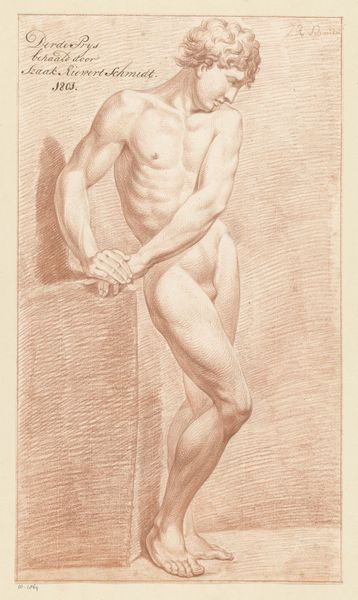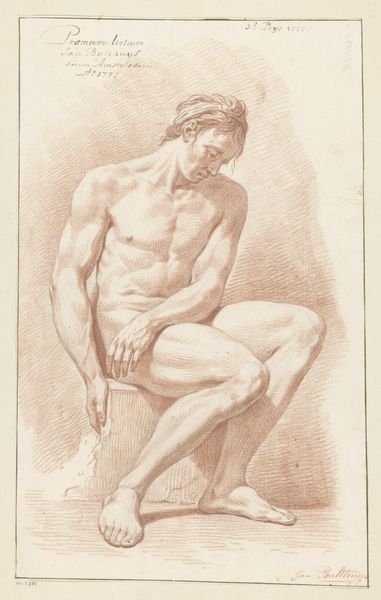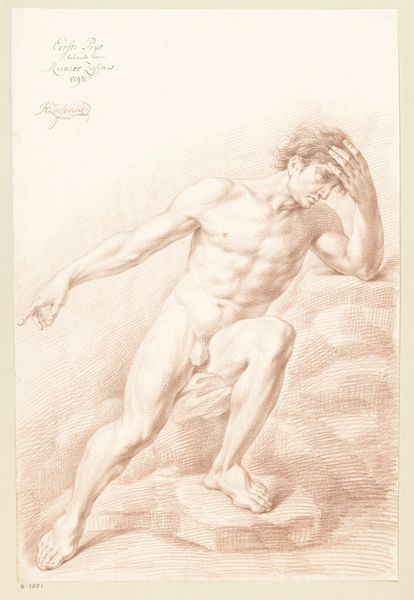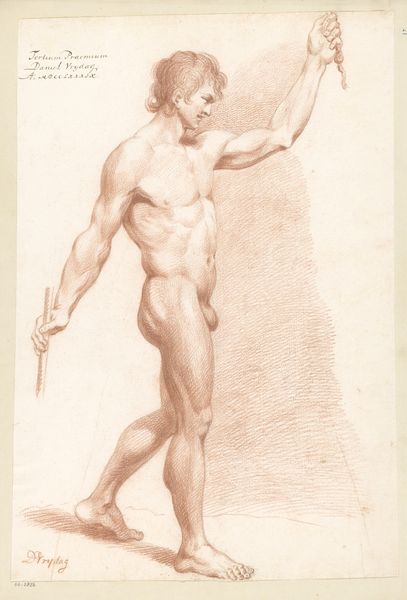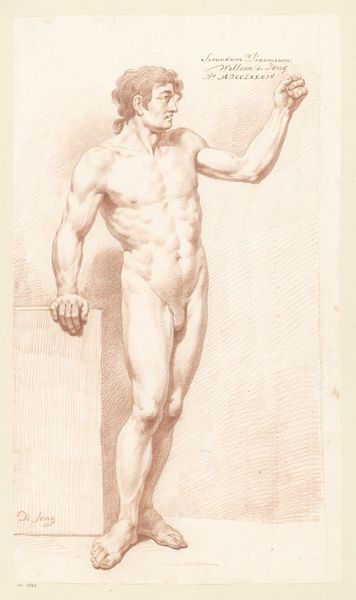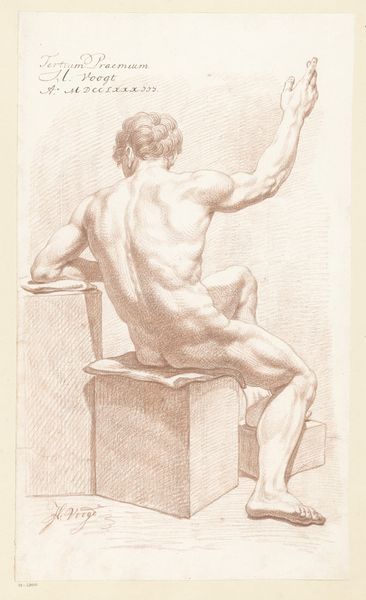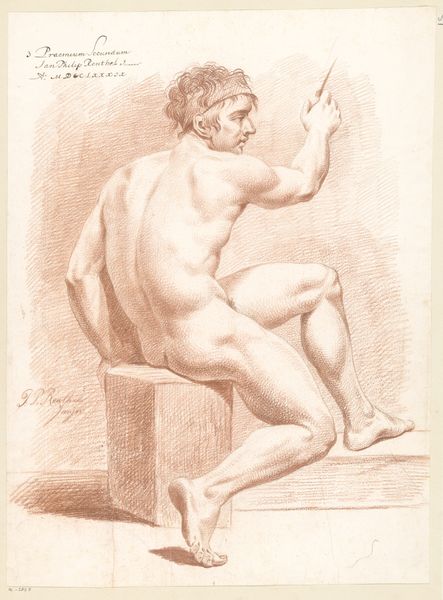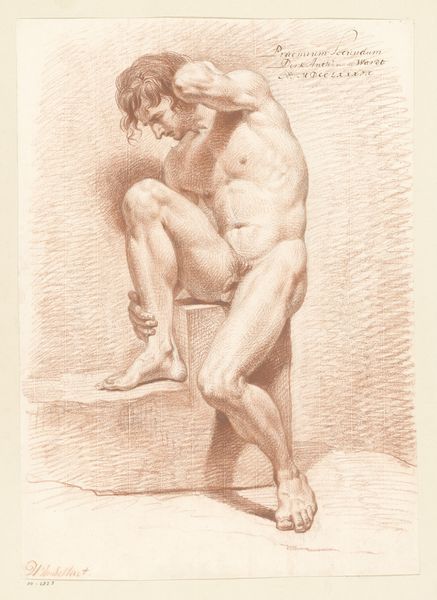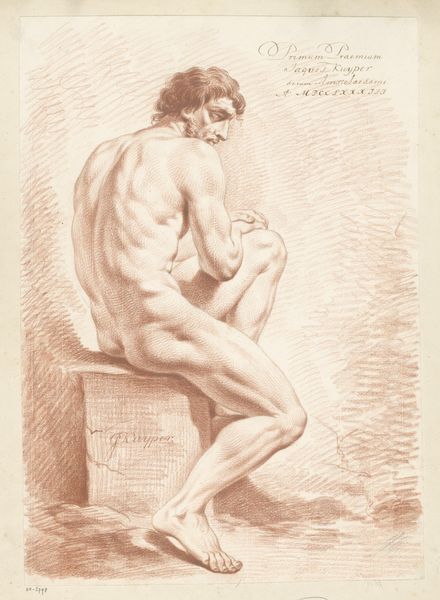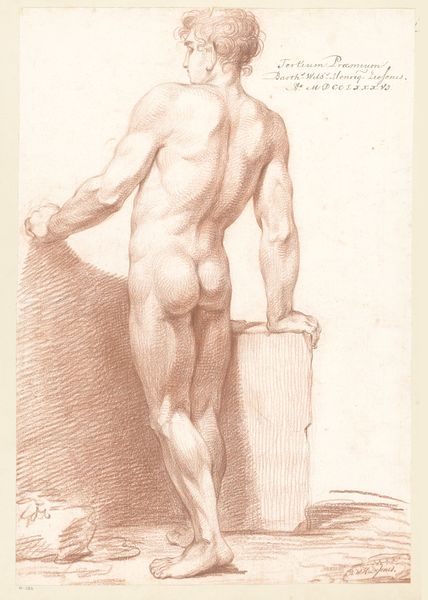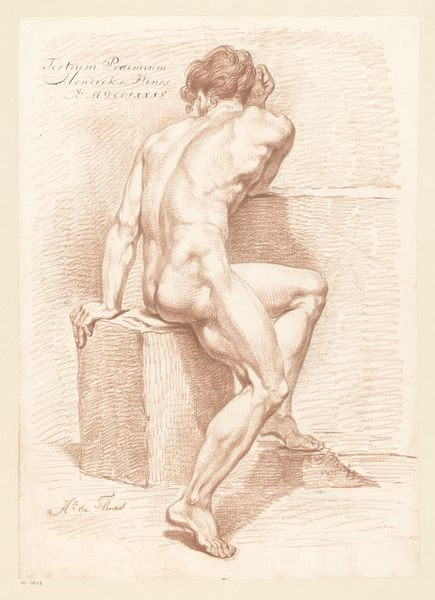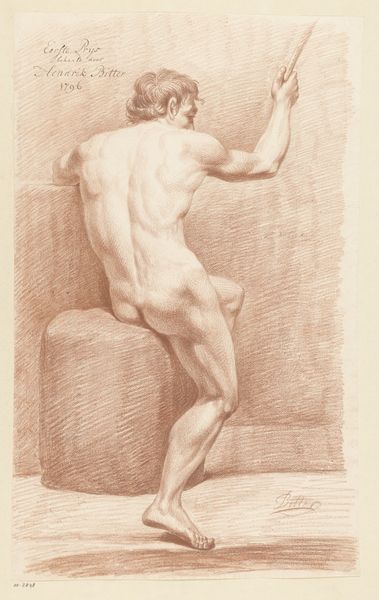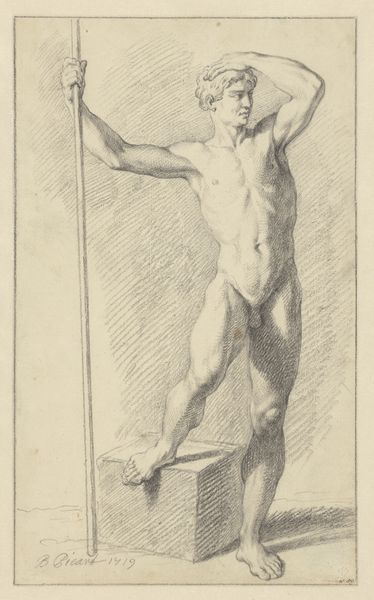
Zittend mannelijk naakt, van voren gezien (2e prijs 1782) Possibly 1782
0:00
0:00
jacqueskuyper
Rijksmuseum
drawing, pencil
#
drawing
#
pencil sketch
#
pencil drawing
#
pencil
#
genre-painting
#
academic-art
#
nude
#
realism
Dimensions: height 473 mm, width 341 mm
Copyright: Rijks Museum: Open Domain
Editor: Here we have Jacques Kuyper's "Zittend mannelijk naakt, van voren gezien," or "Seated Male Nude, Seen From the Front," possibly from 1782. It's a pencil drawing and...wow, the cross-hatching is intense! It makes me wonder about the time and effort involved. What's your take on it? Curator: My eyes immediately go to the raw materiality. Look at the pencil – graphite and clay, mined from the earth, processed, formed into a tool, and then applied to paper, likely handmade rag paper. Each stage involved labor, reflecting class structures of the time. Editor: So, you're thinking about the making of the piece and the socio-economic factors at play? Curator: Precisely. This isn’t just an aesthetic object; it's a product of a system. Consider how academic art training standardized artistic production, shaping even the artist's perception and representation of the human form. Is it art or is it craft? Where does it reside in this social construct of art production? Editor: I see what you mean. We're used to thinking of art as separate, but it's always embedded in its time. Does the "2e prijs 1782" written on the drawing inform this further? Curator: Absolutely. This was a prize-winning piece. Academic art was judged against rigid standards, and that mark reflects a moment of success in conforming to them. Editor: Interesting! I never would have considered how much the materials themselves can tell us about art production in the late 18th century. Curator: Exactly. The drawing encourages us to delve deeper into the socio-economic context. It reveals complex interconnections between art, labour, and capital. Editor: I definitely have a different perspective on academic drawings now. Thanks!
Comments
No comments
Be the first to comment and join the conversation on the ultimate creative platform.
